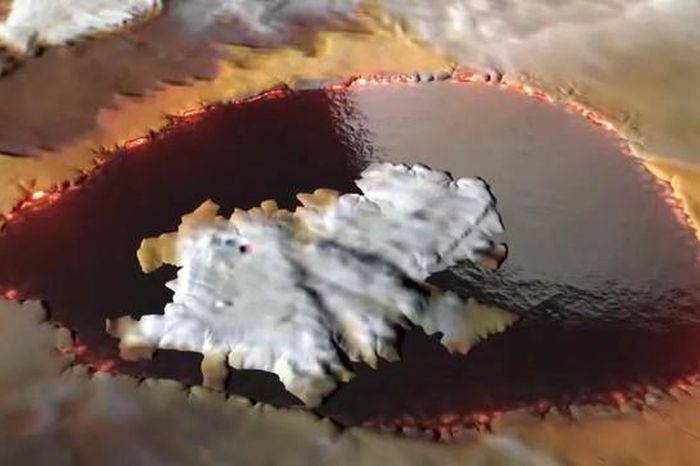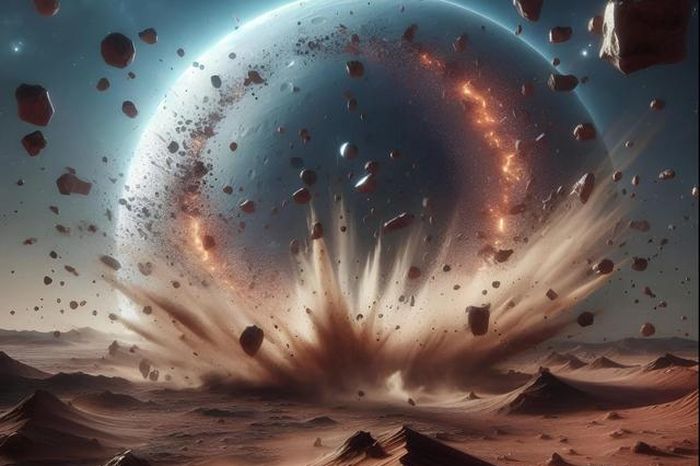NASA to launch fleet of tiny spacecraft to study monster sun storms
NASA announced on Monday it is moving forward with the Sun Radio Interferometer Space Experiment (SunRISE) mission. The mission has a $62.6 million price tag and is aiming to launch in 2023.

Solar particle storms are eruptions that spew radiation out into space. This is a major potential hazard for space explorers, both human and robotic. "The more we know about how the sun erupts with space weather events, the more we can mitigate their effects on spacecraft and astronauts," said NASA Heliophysics Division director Nicky Fox in a statement.
SunRISE will consist of six CubeSats, which NASA said are the size of toaster ovens. The solar-powered spacecraft will work together to "create 3D maps to pinpoint where giant particle bursts originate on the sun and how they evolve as they expand outward into space," said NASA.
NASA has been testing out small, inexpensive CubeSats. Notably, it sent two of the tiny machines along on its Insight Mars mission in 2018.
SunRISE falls under the space agency's Explorers Program, which focuses on low-cost missions. The data it collects could help NASA protect its people as humans reach out for the moon and, one day, Mars.
You should read it
- What kind of toaster sandwich machine today?
- How to Enable Night Shift on a Mac
- Here's your chance to design a NASA payload for a Roomba-sized moon rover
- NASA announces a stunning series of GIF images that capture the historic moments of the aerospace industry
- NASA opens the entire library of photos, videos and audio for free, anyone can see
- Take 6 years to capture beautiful ocean waves
- Explore the universe through 5 NASA websites
- Huawei sets a record for 5G network speed with download speeds of up to 3.67 Gbps
May be interested
- Boeing to launch Starliner spacecraft for second go at reaching the ISS after first mission failed
 boeing hopes its second uncrewed test flight for nasa will make it all the way to the space station this time.
boeing hopes its second uncrewed test flight for nasa will make it all the way to the space station this time. - How can extreme temperatures affect spacecraft? NASA is about to have the answer
 the parker solar probe is currently on its way to a destination just 3.8 million miles (about 6.1 million kilometers) from the sun's surface, literally immersed in the star's outer atmosphere—also known as the corona.
the parker solar probe is currently on its way to a destination just 3.8 million miles (about 6.1 million kilometers) from the sun's surface, literally immersed in the star's outer atmosphere—also known as the corona. - NASA: 'Saturn's Titan moon will be our next stop'
 the us aeronautics and space administration (nasa) has officially announced a new mission concerning the introduction of a spacecraft containing unmanned aircraft on saturn's titan moon.
the us aeronautics and space administration (nasa) has officially announced a new mission concerning the introduction of a spacecraft containing unmanned aircraft on saturn's titan moon. - Clip NASA: 'Glass lake' in the most terrible place in the solar system
 nasa has just revealed incredible images from the juno spacecraft's close flight to 'hellfire' io.
nasa has just revealed incredible images from the juno spacecraft's close flight to 'hellfire' io. - The Orion spacecraft successfully launched, beginning its journey to explore the Moon
 after many months of delay, sls - the most powerful rocket humanity has ever built has left the launch pad in florida, usa, carrying the orion spacecraft as part of the artemis i mission of the artemis program to bring humans to the moon again. 2025 and establish its first permanent presence here in the united states.
after many months of delay, sls - the most powerful rocket humanity has ever built has left the launch pad in florida, usa, carrying the orion spacecraft as part of the artemis i mission of the artemis program to bring humans to the moon again. 2025 and establish its first permanent presence here in the united states. - Did NASA ships indirectly bombard other planets?
 the suicide dive of the nasa spacecraft named dart caused such a strong impact that our neighboring planet also 'suffered the blow'.
the suicide dive of the nasa spacecraft named dart caused such a strong impact that our neighboring planet also 'suffered the blow'. - Leaving the solar system, the NASA ship sent back a confusing message
 one of nasa's spacecraft operating outside the heliosphere began sending meaningless messages to earth late last year, then went silent.
one of nasa's spacecraft operating outside the heliosphere began sending meaningless messages to earth late last year, then went silent. - Successfully launched the ultra-modern solar exploration spacecraft worth $ 672 million
 solar orbiter is one of the most modern spacecraft man has ever built
solar orbiter is one of the most modern spacecraft man has ever built - The NASA ship captured the moment the Korean ship flew in the opposite direction at a relative speed of about 11,500 km/h
 nasa released a series of images capturing the moment the korean spacecraft danuri flew across the moon's surface at high speed.
nasa released a series of images capturing the moment the korean spacecraft danuri flew across the moon's surface at high speed. - Elon Musk intends to launch a spacecraft to Mars in 2019
 ella musk, founder of tesla and spacex, said he was preparing to launch a mars spacecraft next year.
ella musk, founder of tesla and spacex, said he was preparing to launch a mars spacecraft next year.










 Coronavirus updates: States extend lockdowns as federal social distancing guidelines pushed to April 30
Coronavirus updates: States extend lockdowns as federal social distancing guidelines pushed to April 30 Coronavirus treatments: Chloroquine, vaccines and the drugs fighting COVID-19
Coronavirus treatments: Chloroquine, vaccines and the drugs fighting COVID-19 Tokyo 2020 Olympics will now take place in July 2021, due to coronavirus
Tokyo 2020 Olympics will now take place in July 2021, due to coronavirus Some lucky Earthlings should be able to see a Mercury-bound spacecraft fly by our planet in April
Some lucky Earthlings should be able to see a Mercury-bound spacecraft fly by our planet in April Lab-grown meat built on soy scaffold tastes and smells just like beef
Lab-grown meat built on soy scaffold tastes and smells just like beef Homemade face masks may not block coronavirus like N95: CDC says make them your last resort
Homemade face masks may not block coronavirus like N95: CDC says make them your last resort